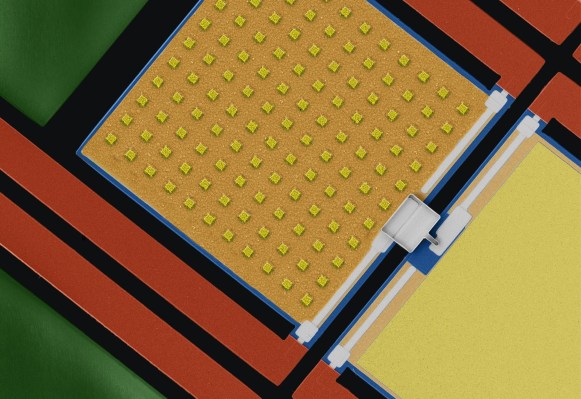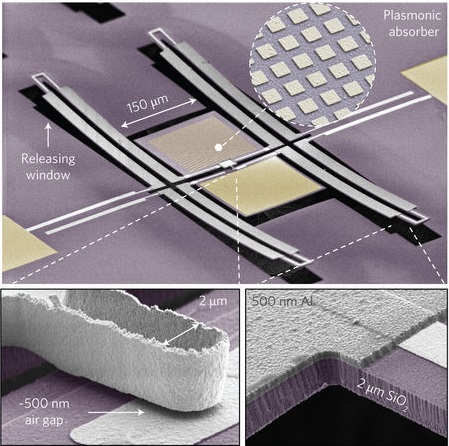It’s easy enough to put an always-on camera somewhere it can live off solar power or the grid, but deep in nature, underground, or in other unusual circumstances every drop of power is precious. Luckily, a new type of sensor developed for DARPA uses none at all until the thing it’s built to detect happens to show up. That means it can sit for years without so much as a battery top-up.
The idea is that you could put a few of these things in, say, the miles of tunnels underneath a decommissioned nuclear power plant or a mining complex, but not have to wire them all for electricity. But as soon as something appears, it’s seen and transmitted immediately. The power requirements would have to be almost nil, of course, which is why DARPA called the program Near Zero Power RF and Sensor Operation.
A difficult proposition, but engineers at Northeastern University were up to the task. They call their work a “plasmonically-enhanced micromechanical photoswitch,” which pretty much sums it up. I could end the article right here. But for those of you who slept in class the day we covered that topic, I guess I can explain.
The sensor is built to detect infrared light waves, invisible to our eyes but still abundant from heat sources like people, cars, fires, and so on. But as long as none are present, it is completely powered off.
But when a ray does appear, it strikes a surface is covered in tiny patches that magnify its effect. Plasmons are a sort of special behavior of conducting material, which in this case respond to the IR waves by heating up.
“The energy from the IR source heats the sensing elements which, in turn, causes physical movement of key sensor components,” wrote DARPA’s program manager, Troy Olsson, in a blog post. “These motions result in the mechanical closing of otherwise open circuit elements, thereby leading to signals that the target IR signature has been detected.”
Think of it like a paddle in a well. It can sit there for years without doing a thing, but as soon as someone drops a pebble into the well, it hits the paddle, which spins and turns a crank, which pulls a string, which raises a flag at the well-owner’s house. Except, as Olsson further explains, it’s a little more sophisticated.
“The technology features multiple sensing elements—each tuned to absorb a specific IR wavelength,” he wrote. “Together, these combine into complex logic circuits capable of analyzing IR spectrums, which opens the way for these sensors to not only detect IR energy in the environment but to specify if that energy derives from a fire, vehicle, person or some other IR source.”
The “unlimited duration of operation for unattended sensors deployed to detect infrequent but time-critical events,” as the researchers describe it, could have plenty of applications beyond security, of course: imagine popping a few of these all over the forests to monitor the movements of herds, or in space to catch rare cosmic events.
The tech is described in a paper published today in Nature Nanotechnology.

